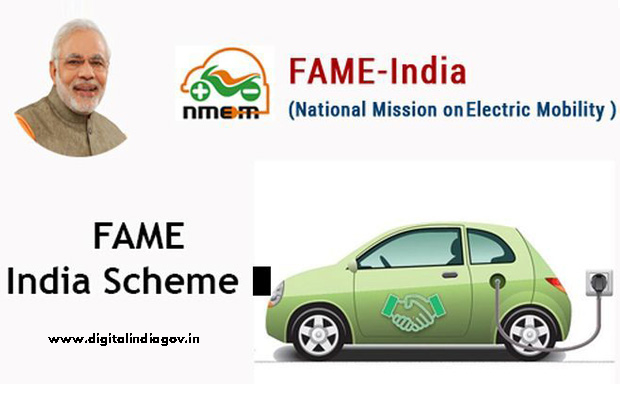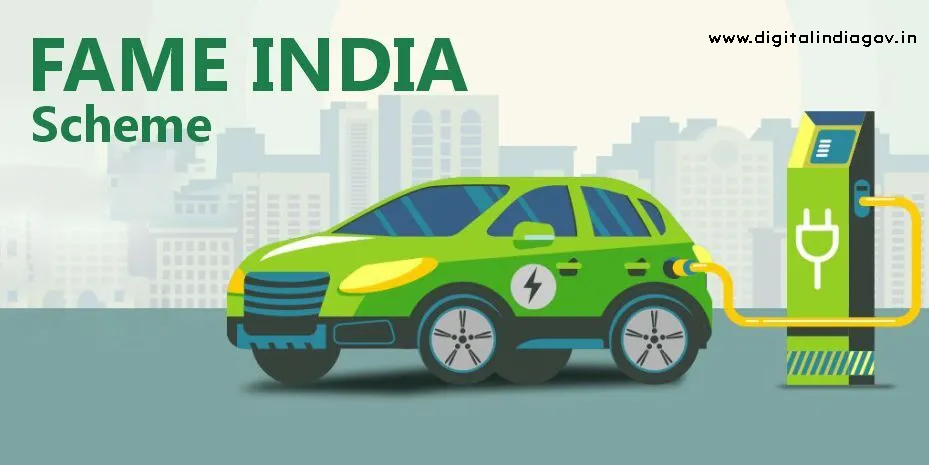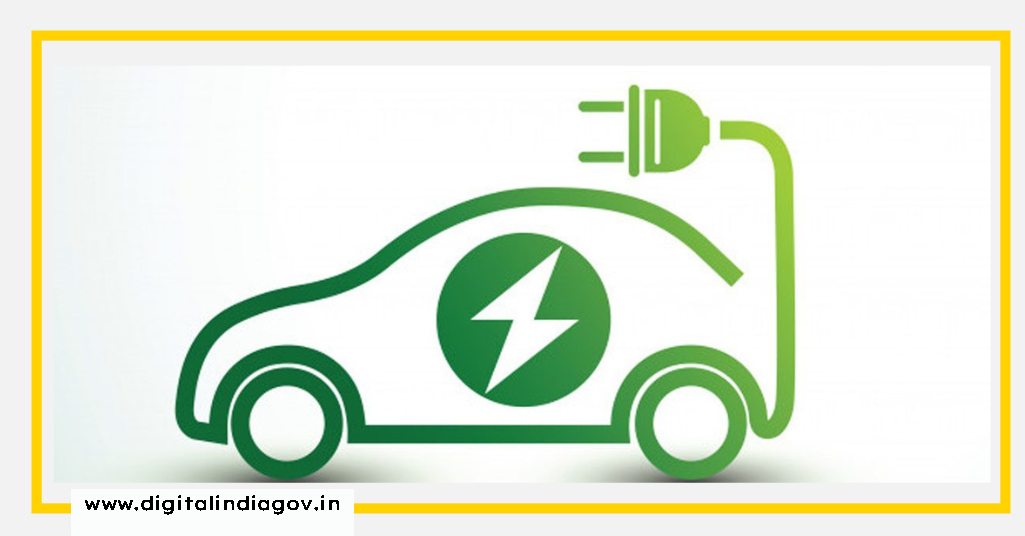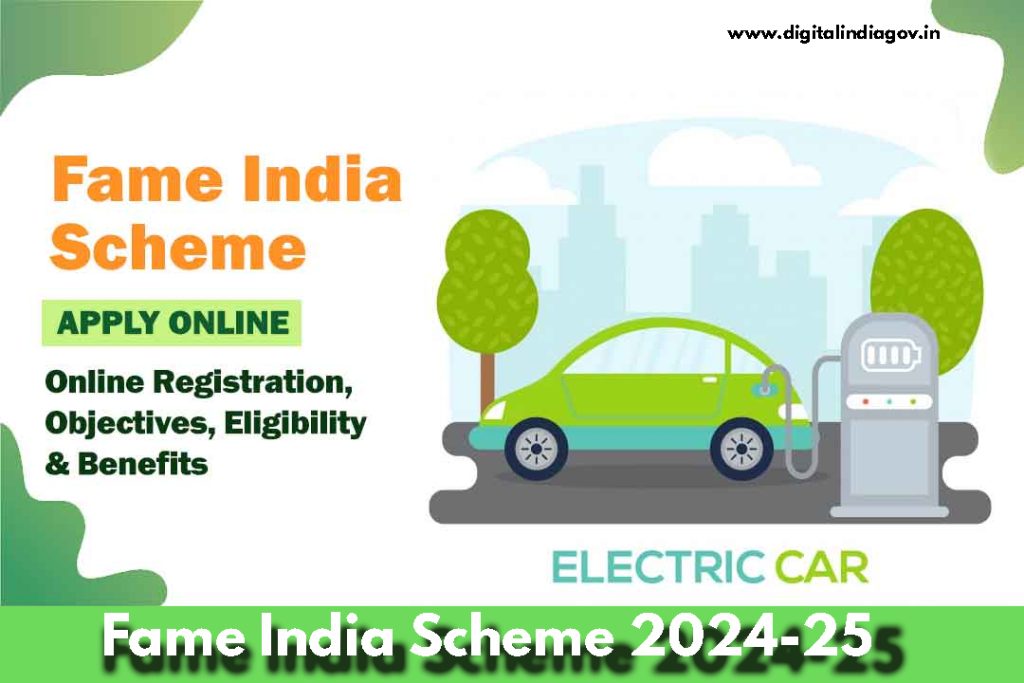Fame India Scheme 2024-25:- The FAME India Scheme is a government subsidy program that falls under the National Electric Mobility Mission Plan (NEMMP). FAME stands for Faster Adoption and Manufacturing of (Hybrid &) Electric Vehicles in India. This program has government support. Its goal is to encourage India to adopt electric vehicles. Introduced in 2015, the program consists of two phases: FAME India Phase I and Phase II.
Contents
What is the Fame India Scheme 2024-25?
In order to encourage the use of electric vehicles, the Union Budget 2015–16 included the Faster Adoption and Manufacturing of Electric Automobiles in India (FAME India) project. The National Electric Mobility Mission Plan (NEMMP) – 2020 includes it. With a budget of Rs. Phase 1 of FAME India, worth INR 895 crore, commenced on April 1, 2015, and ended on March 31, 2019. FAME 2, the second phase, commenced in April 2019 and will continue until March 31, 2024, with a budget of Rs. 10,000 Crore. With financial subsidies, the program seeks to encourage consumers to adopt electric cars. Electric buses, charging stations, electric two-wheelers, three-wheelers, and four-wheelers are all eligible for subsidies. The program’s four primary areas of attention are developing technologies, creating demand, executing trial programs, and constructing infrastructure for charging.

Also Read:- SBI Fixed Deposit Scheme
Background of Fame India Scheme 2024-25
Introduced in the Union Budget of 2015-16, the FAME India Scheme stands for Faster Adoption and Manufacturing of Electric Vehicles in India. It was founded to encourage the use of electric cars and support India’s transition to a greener, more sustainable transportation system. The National Electric Mobility Mission Plan (NEMMP) – 2020, which aims to reduce vehicle emissions and reliance on fossil fuels, includes FAME India as a crucial component. The Department of Heavy Industry is in charge of running the program.FAME 2 aims to incentivize manufacturers and consumers alike to purchase electric vehicles in an effort to promote their widespread use. It also prioritizes research and development in the field of electric transportation as well as the development of charging infrastructure.
Objectives of the Fame India Scheme 2024-25
The FAME India Scheme aims to achieve the following:
- to reduce the initial expenditure in order to hasten the adoption of electric vehicles.
- to incentivize producers of electric vehicles, suppliers, and other companies to increase the quantity of electric cars produced in the nation.
- To minimize the country’s automotive emissions and bring down the levels of air pollution.
- to provide nationwide infrastructure for EV charging.
- to switch to electric cars for thirty percent of all transportation by 2030.
Features of the Fame India Scheme 2024-25
The two phases of the FAME India scheme’s implementation
Features of Phase I
- The scheme’s first phase was introduced with the goal of achieving national fuel security through the nation’s promotion of hybrid and electric cars (EVs).
- It operated from 2015 and 2019.
- Phase I’s budgetary expenditure came to Rs 895 crore.
- The scheme’s first phase provided demand incentives to benefit 2.8 lakh people.
- Across the nation, 425 electric and hybrid buses were in use.
- In four years, roughly 520 infrastructure projects, including charging stations, were approved.
Features of FAME 2
- Following the tremendous results of Phase I, the FAME India program Phase II was created with the purpose of speeding the adoption of electric cars (EVs) by reducing the upfront investment costs.
- It will begin in April 2019 and run for five years, ending in March 2024. It was first implemented for a period of three years, but it was later extended for another two.
- Phase II will now cost up to Rs 10,000 crore in budget.
- Phase II of the program will include the following incentives:
- Demand incentive of Rs 15,000/KWh with a maximum cap of 40% of the cost of two-wheeler vehicles.
- Demand a Rs 20,000/KWh electric bus incentive.
- Demand a reward of Rs 10,000 per kWh for the automobiles in the remaining category.
- Furthermore, Phase II will encourage interlinking to facilitate the integration of renewable energy sources with the infrastructure for charging.
- Major cities, smart city-states with hills and mountains, and cities with a population of one million or more will all have charging stations erected across the country.

Also Read:- Nrega Job Card New List 2024
How does the FAME India Scheme work?
The FAME India program will operate via the verticals listed below:
- Demand-Based Bonus
- administration of the program, which consists of awareness, education, and informational initiatives.
- Installing recharging devices
Eligibility Criteria for Demand Incentives
- The buyer receives a direct subsidy for the generation demand for electric vehicles, known as a demand incentive.
- Electric buses, e-four wheelers, and e-three wheelers, which include e-rickshaws, e-carts, and e-two wheelers, are the categories of vehicles that fall under this eligibility.
- Any car qualified for the FAME India Scheme must be registered in accordance with the Central Motor Car Rules, 1989.
- A person will only be eligible for the subsidy on one car in a given category.
Working
- Assuming the ex-showroom pricing of Rs 1,30,200 for the XYZ two-wheeler electric vehicle in Mumbai
- After the subsidy under the FAME India Scheme, it will be available at ₹ 1,15,200.
- The original equipment manufacturer will submit a claim for this subsidy to the Department of Heavy Industry (OEM).
- Regarding the functionality and efficiency of cars, the OEM must meet minimal technical eligibility requirements.
Benefits of the Fame India Scheme 2024-25
The FAME India Scheme offers the following advantages:
- The decrease in vehicle emissions will result in a major reduction of environmental pollution.
- Through the implementation of these programs, India will meet its goal of having net zero carbon emissions by 2070.
- There will be infrastructure for electric charging installed all around the country.
- The public will make use of the incentives for purchasing personal electric automobiles.
- Reliance on oil imports will lower capital expenditures and the current account imbalance.
- It will give citizens access to environmentally efficient public transport.
Need for Fame India Scheme 2024-25
A UPSC civil services candidate needs to understand the rationale behind the introduction of any government program. Now, let’s examine the rationale behind the FAME India Scheme’s necessity.
- Environmental Pollution: Studies show that air pollution was a contributing factor in over 15 lakh deaths in India in 2019—or 17.8% of all deaths. Air pollution primarily originates from vehicle exhaust. Consequently, lowering vehicle emissions is essential.
- Diminish Oil Import: As electric cars become more widely used, India will be able to lessen its reliance on foreign oil while simultaneously addressing the issue of energy constraints and the current account deficit (CAD).
- Meet International Commitments: India ranks fourth in the world for carbon dioxide emissions. It committed to bringing its carbon emissions down to net zero by 2070 at the COP26 in Glasgow. Additionally, India pledged to reduce its GHG emissions intensity by 33% to 35% by 2030 compared to 2005 levels.
- Self-Sufficiency in Component Manufacturing: At the moment, India does not produce the majority of lithium-ion (Li-ion) battery cells. India must enact a policy in order to lessen its reliance on other nations for the import of battery cells.
- Low Maintenance Cost: There are fewer moving components in an electric vehicle’s assembly. A lower number of moving parts means less maintenance will be required. As a result, it will lower the car’s maintenance costs.
Concerns Related to the Fame India Scheme 2024-25
The following are some issues with the FAME India scheme:
- The cost of electric automobiles is still higher than that of conventional vehicles. This is a substantial hurdle to adoption, especially for lower-income users.
- India now requires a charging infrastructure. People find it challenging to acquire and operate electric automobiles as a result.
- The dread of running out of battery juice when operating an electric car is known as range anxiety. This worries a lot of prospective customers.
- The government supports the FAME India program. However, it is imperative to clarify the duration of the government’s support for the program. This uncertainty may deter investors from making investments in the electric vehicle industry.
- Before electric vehicles may become widely used, a few technical issues still need to be resolved. For instance, to extend the range of electric vehicles, advancements in battery technology are required.

Also Read:- Agneepath Scheme Apply
Way Forward
In India, two-wheelers make up over 80% of all vehicles, with four-wheelers making up just 2%. However, the FAME scheme’s subsidy is determined by the battery capacity.
When it comes to subsidies, premium four-wheelers typically receive larger offers than two-wheelers under the current system. To ensure that the larger portion receives the full benefit, the government should review this section of the scheme.
Since the main barrier preventing more people from using electric vehicles is a lack of charging stations, the government should solve the issue of charging infrastructure.
In order to encourage the use of electric vehicles, the government should take into account creative incentive policies. Examples of these include the removal of road tax and registration fees, free tolls on highways, free parking, and designated parking spaces in business and residential complexes.
FAQ’s
Q. What does FAME stand for in full?
Ans- Faster Adoption and Manufacturing of Electric Vehicles is the full name of the organization.
Q. What kind of subsidy is offered under the FAME India Plan?
Ans- Two-wheelers receive a subsidy of Rs 15,000 KW/h under the FAME India plan, electric buses receive a subsidy of Rs 20,000 KW/h, and other vehicles, such as three- and four-wheelers, receive a subsidy of Rs 10,000 KW/h.
Q. Who is the FAME India Scheme beneficiary?
Ans- The FAME India program benefits vendors, purchasers, and Original Equipment Manufacturers (OEMs).
Suggested Link:- Our Jharkhand
@PAY
